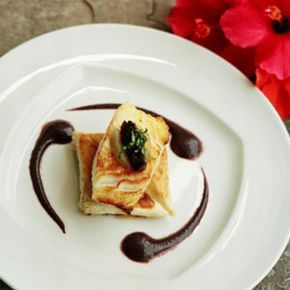On a day-to-day basis, most of us don't put too much thought into what our meals look like. Half the time, it's a victory to dump takeout on paper plates in time for dinner, right? But special occasions call for extra effort -- and that's where plating comes in.
Of course, we're not saying that great plating will magically transform your cooking into a culinary masterpiece, but a little effort will go a long way. Think about it like putting on a great new jacket or pair of jeans. Although the scale still says you haven't lost an ounce, your new clothes make you look and feel 10 pounds thinner.
Advertisement
Keep reading to learn some tips from the pros that will help you put a touch of swank into your next dinner party.

